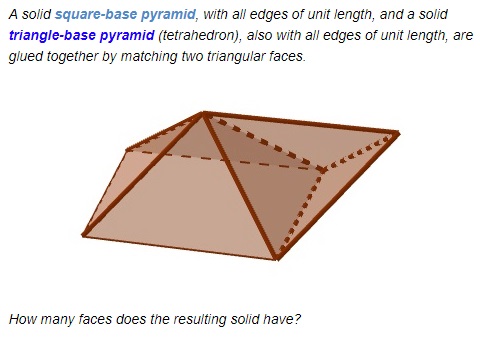Three Pyramids are Better Than Two
The applet presents a tool for investigating an infamous problem. It showed up in 1980 as a practice problem on the Preliminary Scholastic Aptitude Exam, but, to an embarrassment of the Educational Testing Service, the marked answer was incorrect.
The problem is this [Winkler, p. 43]:

No try playing with the GeoGebra applet below:
The expected solution was this. A square pyramid has 5 faces and a tetrahedron 4 faces. When two triangular faces are eliminated by gluing them together there remain
(As an aside, what is the relationship between the volumes of the square pyramid and the tertrahedron? Find out.
References
- P. Winkler, Mathematical Puzzles: A Connoisseur's Collection, A K Peters, 2004
|Activities| |Contact| |Front page| |Contents| |Geometry|
Copyright © 1996-2018 Alexander Bogomolny73607161
